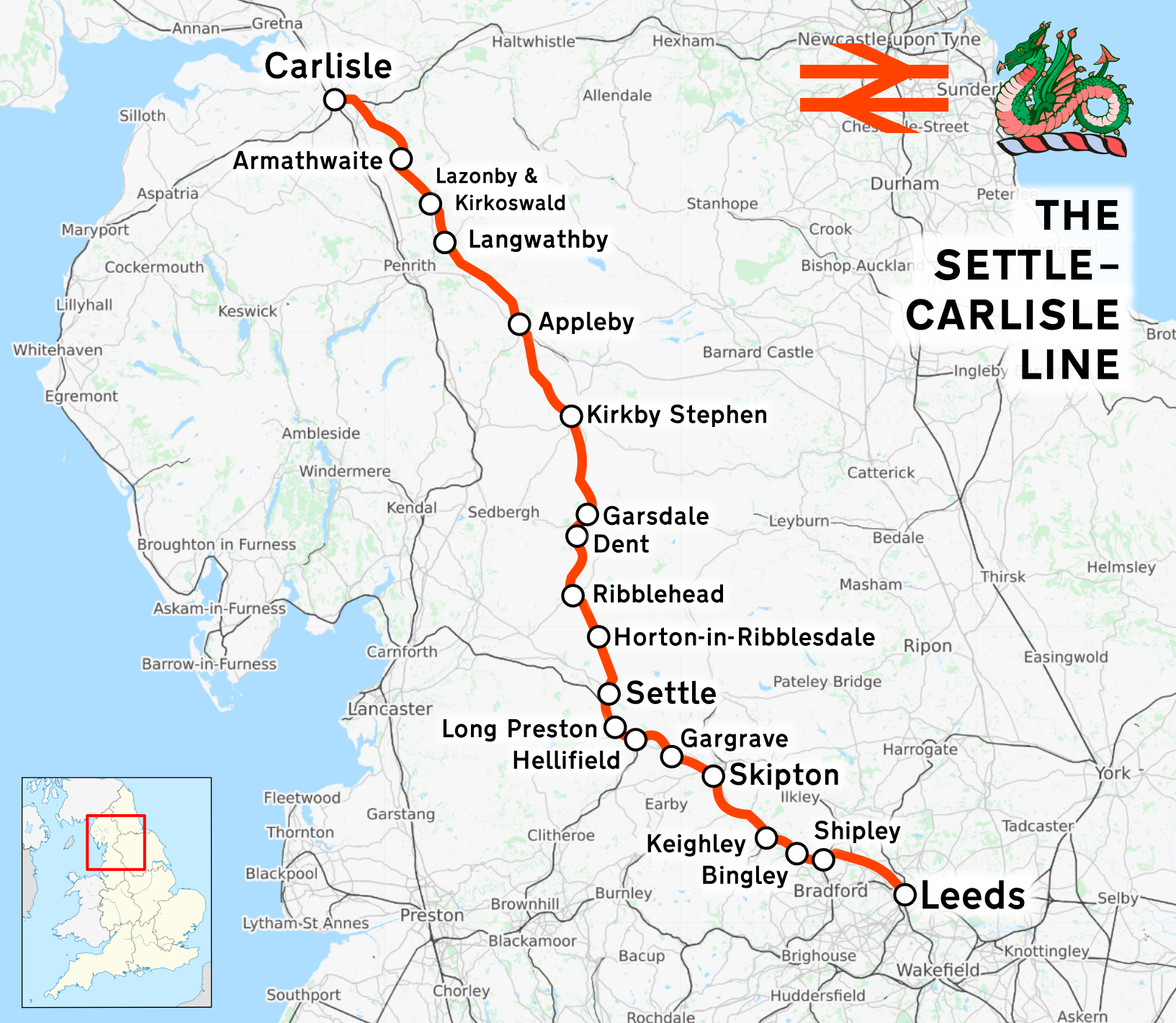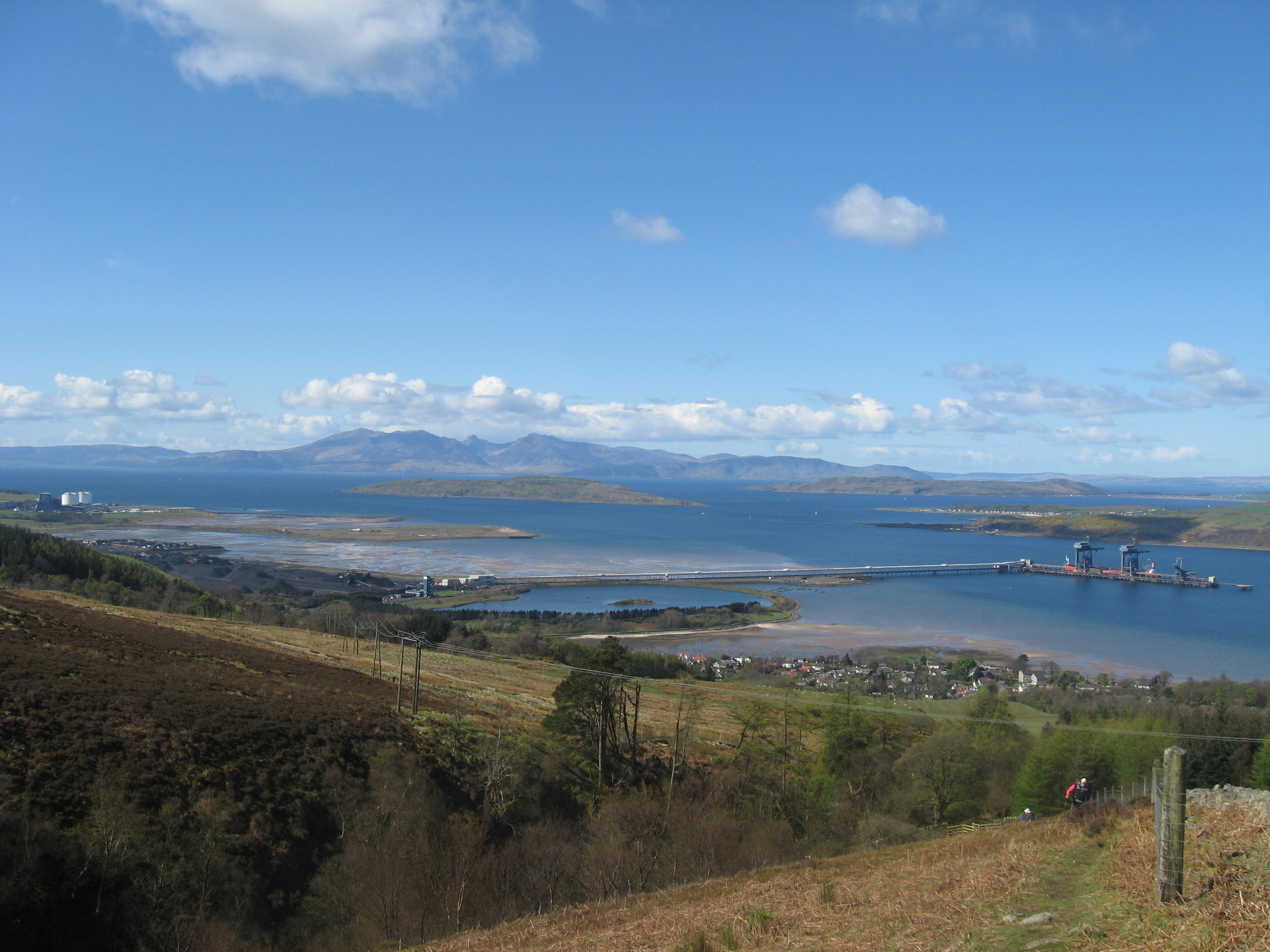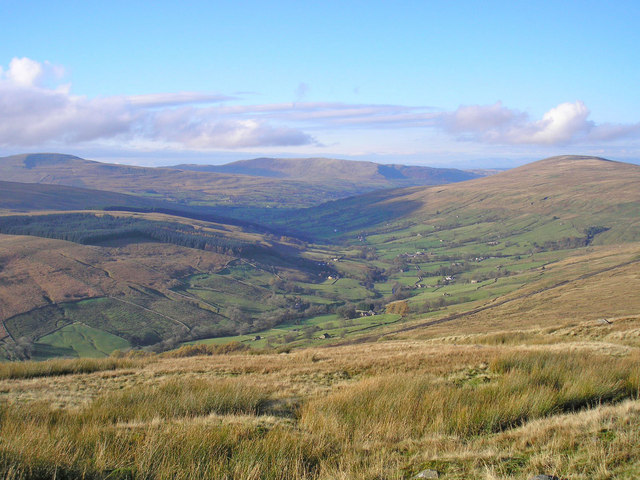|
Dent Head Viaduct
Dent Head Viaduct is a railway viaduct on the Settle–Carlisle line in Dentdale, Cumbria, England. It is the second major viaduct on the line northwards after Ribblehead Viaduct, and is just north of Blea Moor Tunnel at milepost 251, and to the south of Arten Gill Viaduct. Construction of the viaduct began in 1869, and it was completed in 1875, extra time being needed due to periods of heavy rainfall. The line bows slightly to the east in order to follow the contours of Woldfell, which it navigates on the western side. The viaduct was grade II Listed in 1999. Dent Head Viaduct is north of Settle Junction, and south of railway station. History The viaduct is long, high, and consists of ten arches which are each across. The parapets of the viaduct are measured at above sea level. The spans are grouped into two sets of five, separated by a larger pier in the middle. The viaduct is constructed from a local limestone known as ''Blue Limestone'', which was quarried from Short G ... [...More Info...] [...Related Items...] OR: [Wikipedia] [Google] [Baidu] |
Settle–Carlisle Line
The Settle–Carlisle line (also known as the ''Settle and Carlisle'' (S&C)) is a main railway line in northern England. The route, which crosses the remote, scenic regions of the Yorkshire Dales and the North Pennines, runs between Settle Junction, on the Leeds–Morecambe line, and , near the English-Scottish borders. The historic line was constructed in the 1870s and has several notable tunnels and viaducts such as the imposing Ribblehead. The line is managed by Network Rail. All passenger services are operated by Northern apart from temporary diverted services (due to closures of the West Coast Main Line) and are part of the National Rail network. Stations serve towns such as Settle in North Yorkshire, Appleby-in-Westmorland in Cumbria and small rural communities along its route. In the 1980s, British Rail planned to close the Settle–Carlisle line. This prompted a campaign to save the line by rail groups, enthusiasts, local authorities and residents along the route. ... [...More Info...] [...Related Items...] OR: [Wikipedia] [Google] [Baidu] |
Historic England
Historic England (officially the Historic Buildings and Monuments Commission for England) is an executive non-departmental public body of the British Government sponsored by the Department for Digital, Culture, Media and Sport. It is tasked with protecting the historic environment of England by preserving and listing historic buildings, scheduling ancient monuments, registering historic Parks and Gardens and by advising central and local government. The body was officially created by the National Heritage Act 1983, and operated from April 1984 to April 2015 under the name of English Heritage. In 2015, following the changes to English Heritage's structure that moved the protection of the National Heritage Collection into the voluntary sector in the English Heritage Trust, the body that remained was rebranded as Historic England. The body also inherited the Historic England Archive from the old English Heritage, and projects linked to the archive such as Britain from Above, w ... [...More Info...] [...Related Items...] OR: [Wikipedia] [Google] [Baidu] |
Grade II Listed Buildings In Cumbria
Grade most commonly refers to: * Grade (education), a measurement of a student's performance * Grade, the number of the year a student has reached in a given educational stage * Grade (slope), the steepness of a slope Grade or grading may also refer to: Music * Grade (music), a formally assessed level of profiency in a musical instrument * Grade (band), punk rock band * Grades (producer), British electronic dance music producer and DJ Science and technology Biology and medicine * Grading (tumors), a measure of the aggressiveness of a tumor in medicine * The Grading of Recommendations Assessment, Development and Evaluation (GRADE) approach * Evolutionary grade, a paraphyletic group of organisms Geology * Graded bedding, a description of the variation in grain size through a bed in a sedimentary rock * Metamorphic grade, an indicatation of the degree of metamorphism of rocks * Ore grade, a measure that describes the concentration of a valuable natural material in the surroun ... [...More Info...] [...Related Items...] OR: [Wikipedia] [Google] [Baidu] |
Bridges Completed In 1875
A bridge is a structure built to span a physical obstacle (such as a body of water, valley, road, or rail) without blocking the way underneath. It is constructed for the purpose of providing passage over the obstacle, which is usually something that is otherwise difficult or impossible to cross. There are many different designs of bridges, each serving a particular purpose and applicable to different situations. Designs of bridges vary depending on factors such as the function of the bridge, the nature of the terrain where the bridge is constructed and anchored, and the material used to make it, and the funds available to build it. The earliest bridges were likely made with fallen trees and stepping stones. The Neolithic people built boardwalk bridges across marshland. The Arkadiko Bridge (dating from the 13th century BC, in the Peloponnese) is one of the oldest arch bridges still in existence and use. Etymology The ''Oxford English Dictionary'' traces the origin of the wo ... [...More Info...] [...Related Items...] OR: [Wikipedia] [Google] [Baidu] |
Railway Viaducts In Cumbria
Rail transport (also known as train transport) is a means of transport that transfers passengers and goods on wheeled vehicles running on rails, which are incorporated in tracks. In contrast to road transport, where the vehicles run on a prepared flat surface, rail vehicles (rolling stock) are directionally guided by the tracks on which they run. Tracks usually consist of steel rails, installed on sleepers (ties) set in ballast, on which the rolling stock, usually fitted with metal wheels, moves. Other variations are also possible, such as "slab track", in which the rails are fastened to a concrete foundation resting on a prepared subsurface. Rolling stock in a rail transport system generally encounters lower frictional resistance than rubber-tyred road vehicles, so passenger and freight cars (carriages and wagons) can be coupled into longer trains. The operation is carried out by a railway company, providing transport between train stations or freight customer faciliti ... [...More Info...] [...Related Items...] OR: [Wikipedia] [Google] [Baidu] |
Listed Buildings In Dent, Cumbria
Dent, South Lakeland, Dent is a civil parish in the South Lakeland District of Cumbria, England. It contains 203 Listed building#England and Wales, listed buildings that are recorded in the National Heritage List for England. Of these, one is listed at Grade I, the highest of the three grades, four are at Grade II*, the middle grade, and the others are at Grade II, the lowest grade. The parish is in the Yorkshire Dales National Park, it contains the villages of Dent, Gawthrop and Cowgill, Cumbria, Cowgill, and is otherwise completely rural. The large majority of the listed buildings are farmhouses, farm buildings, houses and associated structures. The Settle–Carlisle line of the former Midland Railway runs through the parish, and structures associated with this are listed, including two viaducts and station buildings. The other listed buildings in the parish include churches and associated structures, bridges, public houses, shops, a boundary stone, a former wa ... [...More Info...] [...Related Items...] OR: [Wikipedia] [Google] [Baidu] |
Hunterston Terminal
Hunterston Terminal, in North Ayrshire, Scotland, was an iron ore and coal-handling port located at Fairlie on the Firth of Clyde, operated by Clydeport which was taken over by The Peel Group in 2003. It lies south of Fairlie, adjacent to Hunterston estate, site of Hunterston Castle, and its jetty projects out approximately , about midway into the channel between the mainland and the island of Great Cumbrae. The port, completed in 1979, was originally called Hunterston Ore Terminal and was built to handle iron ore for British Steel Corporation's Ravenscraig steelworks. Existing facilities at General Terminus Quay on the upper River Clyde were unsuitable for increasingly large vessels. Hunterston, with its jetty, was able to handle modern ships of any size, but was closed in 2016 and the site cleared in 2019. History The new port at Hunterston replaced facilities at General Terminus Quay (now Springfield Quay), on the River Clyde, near the centre of Glasgow.Campbell, R.H. '' ... [...More Info...] [...Related Items...] OR: [Wikipedia] [Google] [Baidu] |
Transrail Freight
Transrail was a trainload rail freight operator based in St Blazey, England, UK with a large operating area including Scotland, Wales and the west of England. It was formed in 1994 from part of British Rail's Trainload Freight division, as part of the privatisation of British Rail. Mainline Freight, Loadhaul and Transrail were purchased by a consortium led by Wisconsin Central in 1996 and amalgamated into a new company, English Welsh & Scottish. History Transrail was created in 1994 along with Mainline Freight and Loadhaul as part of the broadly regional split of British Rail's Trainload Freight operations. Transrail had the largest operating area of the three companies, operating in Scotland, Wales and the entire west of England (South West, West Midlands, and North West). The three companies were created with the aim of promoting competition between the businesses. It was initially and briefly named "Trainload Freight West Limited" before being re-branded in July 1994. T ... [...More Info...] [...Related Items...] OR: [Wikipedia] [Google] [Baidu] |
Midland Railway
The Midland Railway (MR) was a railway company in the United Kingdom from 1844. The Midland was one of the largest railway companies in Britain in the early 20th century, and the largest employer in Derby, where it had its headquarters. It amalgamated with several other railways to create the London, Midland and Scottish Railway at grouping in 1922. The Midland had a large network of lines emanating from Derby, stretching to London St Pancras, Manchester, Carlisle, Birmingham, and the South West. It expanded as much through acquisitions as by building its own lines. It also operated ships from Heysham in Lancashire to Douglas and Belfast. A large amount of the Midland's infrastructure remains in use and visible, such as the Midland main line and the Settle–Carlisle line, and some of its railway hotels still bear the name '' Midland Hotel''. History Origins The Midland Railway originated from 1832 in Leicestershire / Nottinghamshire, with the purpose of serving the needs o ... [...More Info...] [...Related Items...] OR: [Wikipedia] [Google] [Baidu] |
Dandry Mire Viaduct
Dandry Mire Viaduct, (or Dandrymire Viaduct), is a railway viaduct on the Settle & Carlisle line in Cumbria, England. It is just north of Garsdale station, from , and south of . When the Settle & Carlisle line was being built, the traversing of Dandry Mire was to have been by use of an embankment, but the bog swallowed all of the material poured into it, so a trench was dug instead, and a viaduct constructed. The viaduct, which is long and high, is still open to traffic on the railway, and is a prominent landmark at the head of Garsdale. History Work started on this part of the line in 1871 as part of the second contract let, with the original intent of crossing Dandry Mire Moss on an embankment rather than a viaduct. In 1873, it was reported that over of material had been poured into the bog, which had just swallowed it all up, displacing the peat, so much so, that it formed ridges either side of the proposed embankment to a height of nearly . The continual wet weather co ... [...More Info...] [...Related Items...] OR: [Wikipedia] [Google] [Baidu] |
Dentdale
Dentdale is a dale or valley in the north-west of the Yorkshire Dales National Park in Cumbria, England. It is the valley of the River Dee, but takes its name from the village of Dent. The dale runs east to west, starting at Dent Head, which is the location of a railway viaduct on the Settle-Carlisle Line. Dentdale is one of the few Yorkshire Dales that drain westwards to the Irish Sea. History Dentdale was first settled in the 10th century when Norse invaders first entered the dale. The dale was also known to the Romans although there is no evidence of settlement during that period. The dale was one of the last of the Yorkshire Dales to be Enclosed in 1859. The typical occupations in the dale were farming and worsted related. Several mills used the fast flowing waters of the River Dee to supply power to the mills. At least one of these was converted to the Dent Marble industry by 1810. Whilst fishing on the Dee at Dentdale in the 1840s, William Armstrong saw a waterwh ... [...More Info...] [...Related Items...] OR: [Wikipedia] [Google] [Baidu] |





